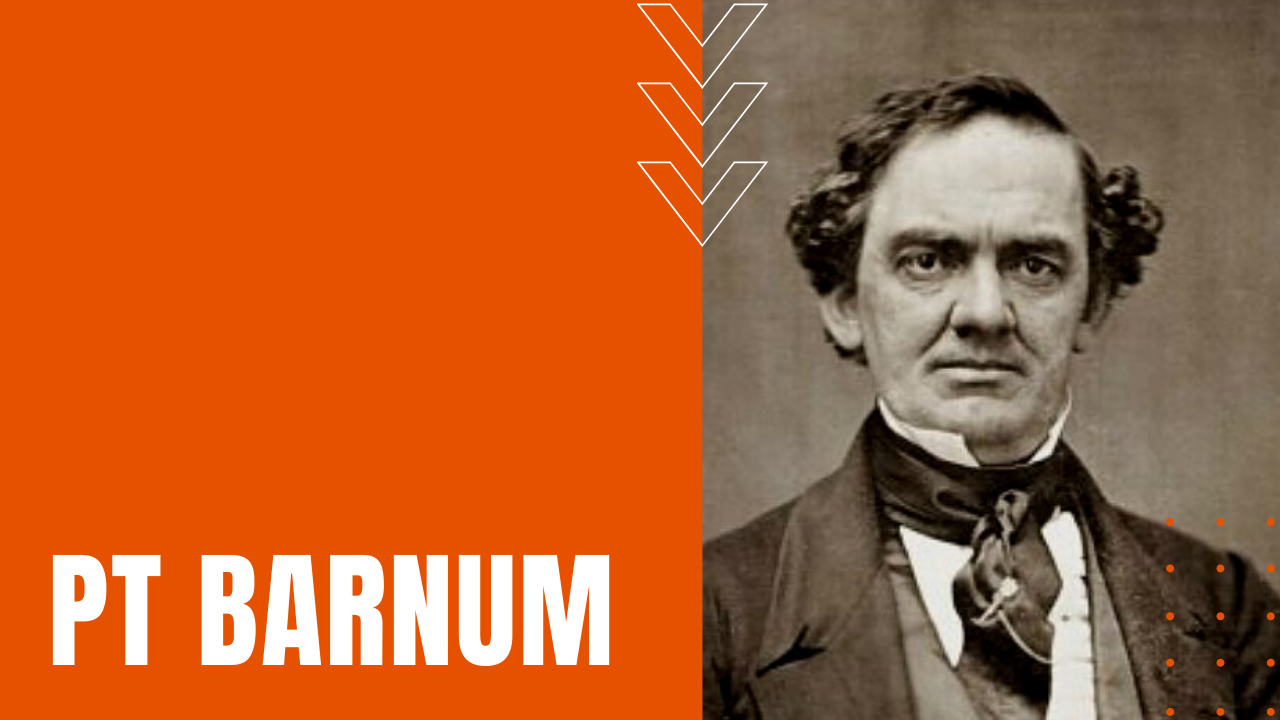PT Barnum Biography

Who was PT Barnum?
In an age when Americans were thirsty for all things freakish and strange, Phineas Taylor Barnum became a centerpiece for nineteenth-century showmanship. Born into poverty in 1810 Bethel Connecticut, PT Barnum, as he became known, had an early knack for making money, peddling snacks and homemade cherry rum by age twelve at local public gatherings.
By 21, Barnum owned the Herald of Freedom newspaper, a lottery and a general store. By age 25, he purchased a blind slave named Joice Heth, who claimed to be the 161-year-old nurse of George Washington, touring the old woman through New England until her death in early 1836. In the spirit of profiteering, Barnum hosted a live autopsy of Heth’s body in a New York saloon, where 1,500 spectators paid fifty cents a head to witness Heth cut into pieces, revealing that the dead former slave was most likely half her purported age.
Barnum’s next major act as a showman was his Manhattan-based American Museum, comprising a sprawling collection of historical artifacts, aquariums, animal curiosities such as the Fejee Mermaid—which proved to be the upper half of a monkey sewn onto the bottom half of a fish—as well as an assortment of freak show humans, including General Tom Thumb and Chinese Siamese Twins Chang and Eng.
PT Barnum and Jenny Lind
He also showed his highbrow side when in 1850 he inked a deal to bring European opera singer Jenny Lind to America. Billed by Barnum as the Swedish Nightingale, Lind became an overnight sensation that netted the showman a whopping half million dollars, or roughly $17.5 million in today’s currency.
When did PT Barnum Start His Circus?
After his museum was twice destroyed by fire, PT Barnum teamed up with James Bailey when Barnum was 60 years old, touring the country with animals such as Jumbo the Elephant, as well as an assembly of human freaks including Myrtle Corbin the four-legged woman, Zip the Pinhead, Prince Randian the Living Torso, the Wild Men of Borneo and Josephine Clofullia, known as the Bearded Lady.
Barnum first dipped his toes into politics in 1865, when he was elected into the Connecticut General Assembly, where despite his past abuse of Joice Heth and other racial minorities, he distinguished himself as an advocate for African American equality and voting rights.
He later served as mayor of his adopted hometown of Bridgeport Connecticut, returning to the Connecticut Legislature in the late 1870s, where he became a leading advocate for pro-temperance reforms and an end to the death penalty. As the late historian and Chief Librarian of Congress Daniel Boorstin once wrote,
“Contrary to popular belief, Barnum’s great discovery was not how easy it was to deceive the public, but rather, how much the public enjoyed being deceived.”
Daniel Boorstin, Chief Librarian of Congress
